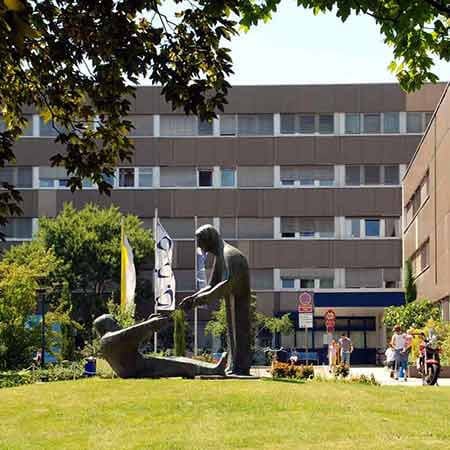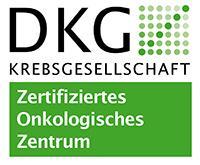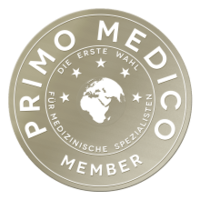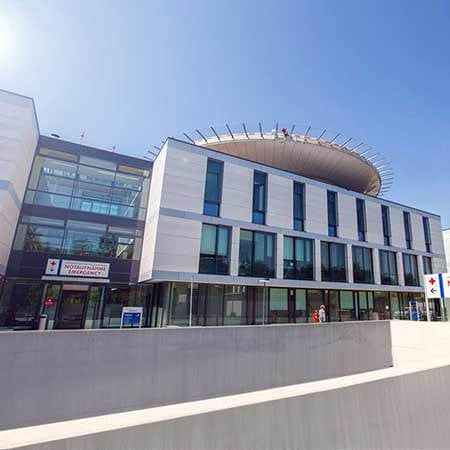Malignant soft tissue tumors are comparatively rare. They account for 0.7% of all malignant neoplasms in adults, but in childhood, their frequency reaches 6.5%, and they rank 5th among the most common malignant neoplasms of childhood.
Content
- Overview
- The features of giant cell fibroblastoma (GCF)
- Symptoms of giant cell fibroblastoma (GCF)
- Diagnostics of the giant cell fibroblastoma in Germany
- Treatment options for giant cell fibroblastoma
- Surgery
- Prognosis
- Benefits of cancer treatment in Germany
- German hospitals to undergo treatment of giant cell fibroblastoma
- The cost of treatment in Germany
- How can I undergo cancer treatment in Germany?
Overview
Giant cell fibroblastoma (GCF) is considered a form of dermatofibrosarcoma protuberans. Like many other types of tumors, dermatofibrosarcoma protuberans occur because cells begin to divide rapidly, eventually transforming into abnormal ones.
Dermatofibrosarcoma protuberans is a type of tumor that consists of pathologically altered fibroblasts (cell of connective tissue). In most cases, this tumor develops in the skin and may eventually spread to the lungs, although this happens relatively rare. In most cases, treatment of dermatofibrosarcoma protuberans requires surgical removal, since other methods have a very low success rate.
Pathology develops due to the fusion of two specific genes. The resulting fusion gene (that appears to be common for dermatofibrosarcoma protuberans and giant cell fibroblastoma) does not function as it should function normally. Instead, it produces substances that stimulate tumor growth, although the gene itself perceives it as normal functioning.
At first, the whole process may manifest in the form of a small bump under the skin. Over time, dermatofibrosarcoma protuberans can invade muscles and spread to surrounding organs.
The causes and mechanisms of the development of both giant cell fibroblastoma (GCF) and dermatofibrosarcoma protuberans remain unclear. Some researchers point to a possible connection with injury, others – to the presence of genetic abnormalities.
The features of giant cell fibroblastoma (GCF)
The tumor can be located anywhere in the body, but more often it is localized in the area of the chest, spine, abdomen, or extremities.
If we’re talking about dermatofibrosarcoma protuberans, it sometimes appears on the neck or scalp. Unlike giant cell fibroblastoma, dermatofibrosarcoma protuberans is prone to metastasizing, but the lower limbs and distal upper limbs are rarely affected though.
At the initial stages, the surface of both giant cell fibroblastoma and dermatofibrosarcoma protuberans is smooth or slightly bumpy. The color is brownish, reddish, purple, or bluish. As a result of slow growth over several years, the primary focus turns into a tumor-like node protruding above the surface of the skin. The skin over the protruding dermatofibrosarcoma protuberans or giant cell fibroblastoma is usually atrophied. Initially, the node is freely movable. As the underlying tissues grow and adhesions arise, the mobility of both giant cell fibroblastoma and dermatofibrosarcoma protuberans decreases.
How big the tumor is depends on the course of the disease, but the size can range from a few millimeters to 10-15 centimeters. Usually, a giant cell fibroblastoma, like dermatofibrosarcoma protuberans, is diagnosed when its diameter reaches several centimeters.
The giant cell fibroblastoma is dense, fibrous, and consists of bundles of spindle-shaped cells. The molecular and cellular structure is somewhat elongated, with different levels of cell differentiation in each case.
The tumor forms many root-like small outgrowths that penetrate the underlying tissues. At the initial stages, it is a formation of nodules. Subsequently, the number and size of nodules in the formation increase. The skin over the giant cell fibroblastoma is usually thinned. With the disease being undetected for a long time, bleeding or erosion may appear in the place of the neoplasm location.
Symptoms of giant cell fibroblastoma (GCF)
Usually, both giant cell fibroblastoma and dermatofibrosarcoma protuberans are asymptomatic. Less often patients complain of minor or moderate pain in the area of the neoplasm. With a prolonged course of giant cell fibroblastoma or dermatofibrosarcoma protuberans, erosions can be found on the surface of the tumor.
Sometimes, usually after repeated relapses, dermatofibrosarcoma protuberans metastasizes to regional lymph nodes and distant organs. It should be noted that a giant cell fibroblastoma, which isn't usually characterized by metastasizing, can invade the underlying tissues, affecting the bones, muscles, and organs located nearby.
Diagnostics of the giant cell fibroblastoma in Germany
The diagnosis of giant cell fibroblastoma in German hospitals is established based on clinical manifestations and data from additional studies. As the disease is accompanied by nonspecific symptoms, the main diagnostic technique is the examination of a tissue sample taken during biopsy.
There are no specific immunochemical markers of the tumor. The final diagnosis of giant cell fibroblastoma is based on molecular and histological examination data. To detect distant cancer cells, ultrasound scan of internal organs, chest X-ray, and other imaging techniques are used.
Treatment options for giant cell fibroblastoma
Surgery is often the preferred treatment for giant cell fibroblastoma. Removing the tumor also allows the surrounding tissue to be examined for signs of invasion. Fortunately, this procedure is relatively straightforward and rarely leads to the development of complications. Even when surgery is performed, subsequent treatment with radiation or chemotherapy is often carried out as a preventive measure.
Chemotherapy is usually used to shrink the tumor. Mild chemotherapeutic drugs are often used for various types of chemotherapy for giant cell fibroblastoma, which in some cases give promising results. There is also a good chance that radiation therapy will be used in combination with chemotherapy.
Surgery
Surgical treatment is carried out on an outpatient basis or in a hospital setting.
The most effective is the Mohs operation, during which the dermato-oncologist excises the visible tumor and, if necessary, the surrounding tissue. After excision, the clinical laboratory assistant performs mapping – makes 1 mm thick slices of a protruding dermatofibrosarcoma, stains the samples with special dyes, and examines them under a microscope to determine the boundaries of the tumor.
Based on the data obtained during the microscopic examination, the doctor determines in the boundaries of giant cell fibroblastoma, and, if necessary, excises the tissues nearby. This technique allows doctors to accurately determine the true boundaries of the tumor and makes it possible to reduce the number of relapses.
Prognosis
The prognosis for giant cell fibroblastoma, especially in the case of early detection, is quite favourable.
However, the prognosis for giant cell fibroblastoma depends on the course of the disease and the number of relapses. According to various data, the risk of recurrence after radical surgery ranges from 10 to 60%, which may be due to both differences in the severity and spreading of the process or the chosen surgical technique.
While it is not considered to be the most dangerous of all tumor types, it is important to understand that giant cell fibroblastoma is a serious disease. Detection at the advanced stages of the disease has a significant impact on the treatment process, as well as on the duration of the recovery period. By following the doctor's recommendations, both during the treatment with radiation and chemotherapy and after surgery, you can minimize symptoms or discomfort that may be present.
Benefits of cancer treatment in Germany
Oncology treatment in Germany has long been a gold standard in medicine. German hospitals are showing amazing statistics. They have about 40% more treatment success than other countries in Europe and Asia – all due to the effectiveness of German medicine.
Cancer treatment in Germany has several advantages:
- Impeccable diagnostic system
- Transparent pricing system
- Widespread use of advanced robotic technologies in medicine
- Disciplined and professional staff
All modern instrumental and laboratory research methods are available for patients. At the same time, diagnostic buildings are located on the same territory as inpatient departments. This means that the time is used as efficiently as possible.
In cancer treatment in Germany robot surgeons and modern laparoscopic installations are not considered advanced technology. These are usual assistants of the oncologist surgeon.
Oncology is one of the most developed areas in German medicine. Local oncologists study at universities for a long time and must undergo practical training in the best clinics in the country and the world. The middle and junior medical staff do their job clearly, and they are always ready to come to the rescue.
German hospitals to undergo treatment of giant cell fibroblastoma in
German hospitals are known for their excellent service, advanced equipment, highly qualified specialists, and proved treatment efficiency.
Hospitals that specialize in the treatment of giant cell fibroblastoma are:
- Vivantes Neukolln Hospital Berlin
- MediClin Robert Janker Clinic
- University Hospital Ulm
- Medias Cancer Clinic Burghausen
- St. Vincentius Hospital Karlsruhe-Academic Hospital of University of Freiburg
- University Hospital Freiburg
- University Hospital Frankfurt am Main
The cost of treatment in Germany
Since 2003, the diagnosis-related pricing system has been used in Germany. This is a standard system for determining the price of treatment, depending on the diagnosis of the patient and the method of treatment of the disease chosen by the German doctors. Thus, the cost of medical services is approximately the same in different hospitals in Germany. However, the price can fluctuate depending on the medical procedures involved in the treatment plan.
The cost of treatment with tumor resection is 10,825-18,353 EUR. The cost of treatment with additional diagnostics of giant cell fibroblastoma is 14,000-21,500 EUR.
Of course, the cost of treatment in Germany cannot be called cheap, but the results achieved by German specialists are truly priceless.
How can I undergo cancer treatment in Germany?
If you are dissatisfied with the level of medicine in your native country, you can come to Germany for treatment.
In German clinics, you will undergo precise diagnostics and treatment of high quality that will be minimally invasive, safe, and effective. Prices here are not the lowest, but quite affordable.
To organize a trip to Germany, contact the medical tourism company Booking Health. Booking Health will help you find a good clinic and the best specialist, and will provide language support throughout your stay in Germany.
All you need to do is leave a request on the Booking Health website. You will be contacted and provided with all the information about cancer treatment in Germany.
Authors: Dr. Nadezhda Ivanisova, Dr. Sergey Pashchenko







